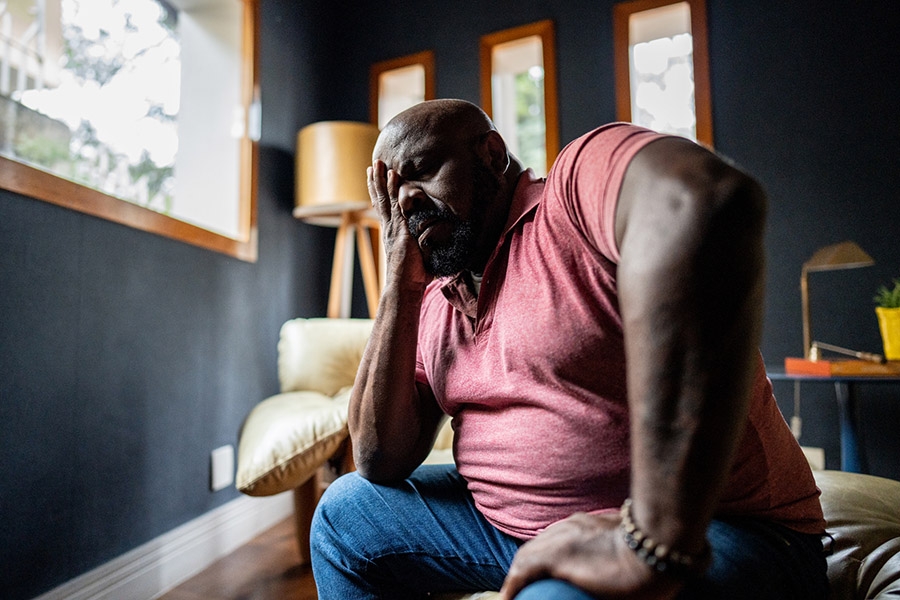There are many misconceptions about chronic obstructive pulmonary disease, or COPD as it is commonly called. As a pulmonologist who treats patients with COPD, I've had the opportunity to learn a lot about what people think they know about this lung condition that makes it hard to breathe.
Part of my job is to educate my patients about COPD so that we can work together to make the best decisions for their health. Here are 5 of the most common misconceptions surrounding COPD, including how it can be caused and what can be done to manage symptoms. (There are more options than you may think.)
Myth: Only people who smoke develop COPD.
Fact: About 1 in 4 people diagnosed with COPD has never smoked. There's no denying the role that tobacco plays in developing COPD. Indeed, the vast majority of COPD cases are caused by smoking. Cigarettes expose the lungs to thousands of toxins, which increase the chance for lung infections, destroy air sacs in the lungs, cause airways to swell, and narrow the passages in the lungs where air flows through.
But, smoking doesn’t account for everyone with COPD. Some of my patients with COPD don’t have a history of smoking.
Most of these cases are the result of long-term exposure to other substances that can irritate and damage the lungs, such as air pollution, dust, chemical fumes, or secondhand smoke. Less commonly, suffering a serious respiratory infection during childhood or having certain genetic conditions can also play a role in developing COPD. Some people who have asthma also develop COPD.
Myth: Quitting smoking won't help since the damage is already done.
Fact: Even after a lifetime of smoking, quitting can improve lung function in as little as two months. After nine months without cigarettes, you’ll cough less often and have less shortness of breath.
I tell all of my patients with COPD who smoke that it's never too late to quit. Doing so can improve their symptoms and allow them to do more of the things they enjoy. That’s why I encourage them to join the smoking cessation program here at Temple Health.
Myth: You can't exercise with COPD.
Fact: Regular exercise helps improve lung function. It can make a patient feel better physically and mentally.
It may seem like having trouble breathing would take exercise off the table for people with COPD. But I encourage my patients with COPD to be active in accordance with their ability (stopping if they feel uncomfortable).
Regular physical activity trains the body to use oxygen more efficiently, which can reduce feelings of breathlessness. It's also a proven tool to help with stopping smoking and lowering the risk for infections that can lead to COPD flare-ups. Exercise can also help combat the mental fogginess that can sometimes come with low oxygen levels. And to top it all off, it's a natural mood booster.
You should always work with your doctor to determine the best types of exercise and intensity level. If you typically use supplemental oxygen, you should use it during exercise as well. Some of my patients who haven't been active in a while start off with simple stretching exercises. As their fitness improves, they are often able to move on to aerobic activities like walking, biking, or swimming, as well as resistance training.
Myth: COPD is a man's disease.
Fact: All genders can develop COPD, but more women than men now have the disease. Also, while the number of men dying from COPD is going down, the opposite is true for women: The number of women dying from COPD is continuing to rise.
Female smokers may be at especially high risk of developing COPD. It’s thought that hormones like estrogen make women more sensitive to the chemicals found in tobacco smoke. And in fact, female smokers are more likely to die from COPD compared to their male counterparts.
Having COPD can potentially increase a woman's risk for other serious health problems, too, including heart disease and osteoporosis. Compared to men, women with COPD are also more prone to developing depression and anxiety.
Currently, we don’t know what drives these differences between men and women — is it chromosomes, hormones such as estrogen or progesterone, or even the experiences women have in their everyday lives? Due to this, it is also difficult to assess these same risks and outcomes for trans and nonbinary adults.
Myth: There are no effective treatments for COPD.
Fact: There are a wealth of treatments that can help with breathing and improve quality of life. However, COPD is a chronic, progressive disease with no actual cure. Part of my goal as a pulmonologist is to find the most effective therapies at the outset of a patient’s diagnosis and to make adjustments as needed.
I often recommend that my patients with COPD take part in pulmonary rehabilitation — a program designed to improve lung function and quality of life through exercise, education, and good nutrition. Temple Health has an excellent program that my patients really enjoy.
Medications that make it easier to breathe are a cornerstone of COPD treatment. They play an even greater role in managing the disease as a patient's symptoms become more severe and everyday activities grow more difficult.
There are a range of medications to choose from. I often prescribe bronchodilators (which relax airway muscles to improve breathing), anti-inflammatory medications (which reduce airway swelling and mucus production), and supplemental oxygen. Combination inhaler medications can also provide fast-acting relief in moments when breathing difficulty is more severe. They also deliver longer-acting medicines that keep airways open as much as possible throughout the day and night.
Even at the later stages of COPD, we have many advanced and exciting treatment options. Some patients may be candidates for surgical procedures to remove destroyed air sacs or diseased portions of the lung. They may even be eligible to receive a lung transplant. Here at Temple Health, we've also pioneered minimally invasive options like bronchoscopic lung volume reduction (BLVR), designed specifically for patients with advanced emphysema.
There are clinical trials to consider, too. The Temple Lung Center has ongoing research studies giving people with COPD access to emerging treatments not yet available elsewhere. In fact, the vast majority of my patients are eligible for at least one trial.
Take control of your lung health
Are you getting the most effective and up-to-date treatment for your COPD? If you’re not sure and would like a second opinion, schedule an appointment with a Temple pulmonologist today. Our team of experienced lung specialists, trained nurses, and respiratory specialists work together to deliver comprehensive care to help you feel your best.
Helpful Resources
Looking for more information?

